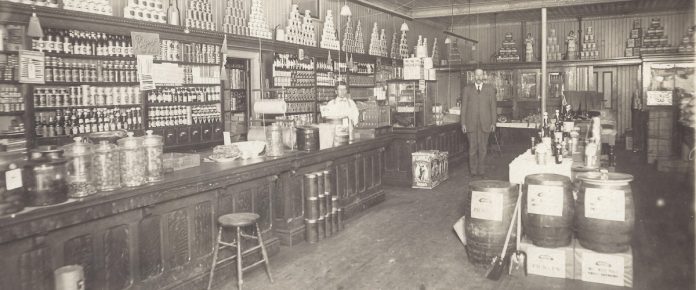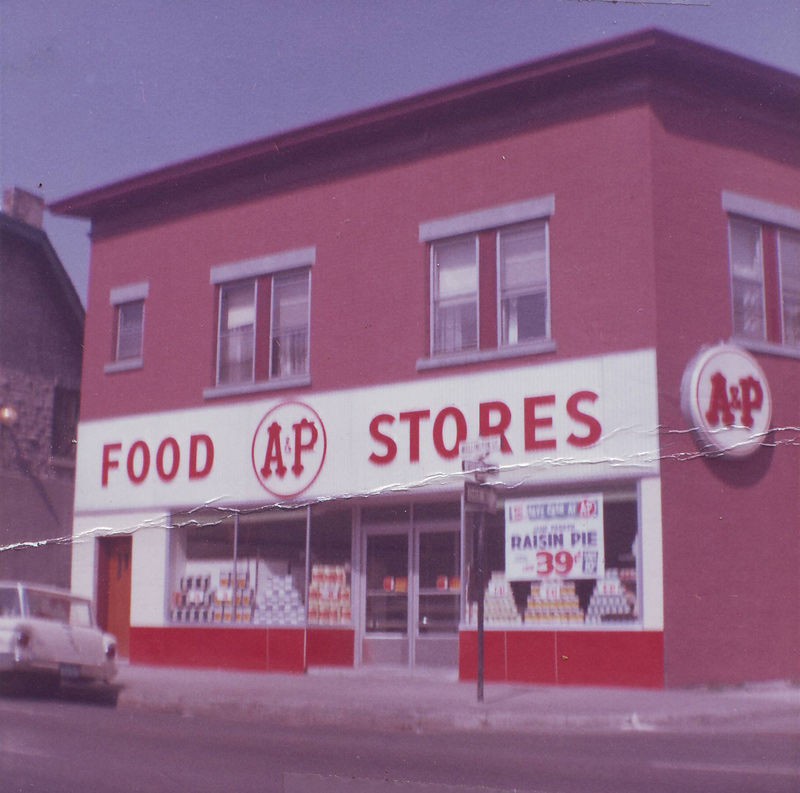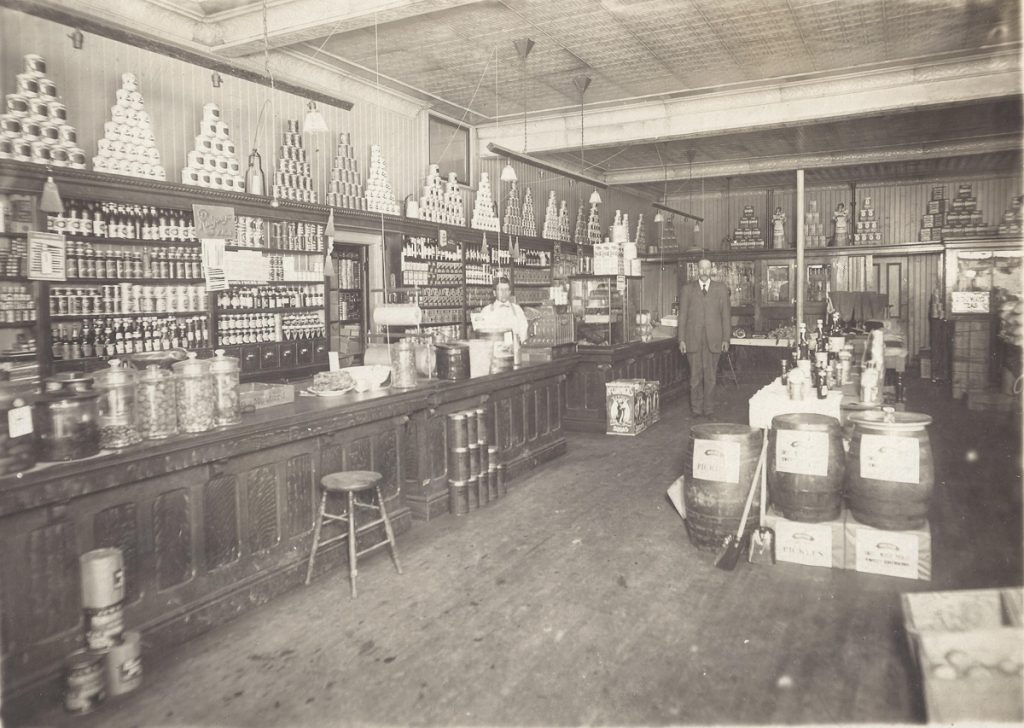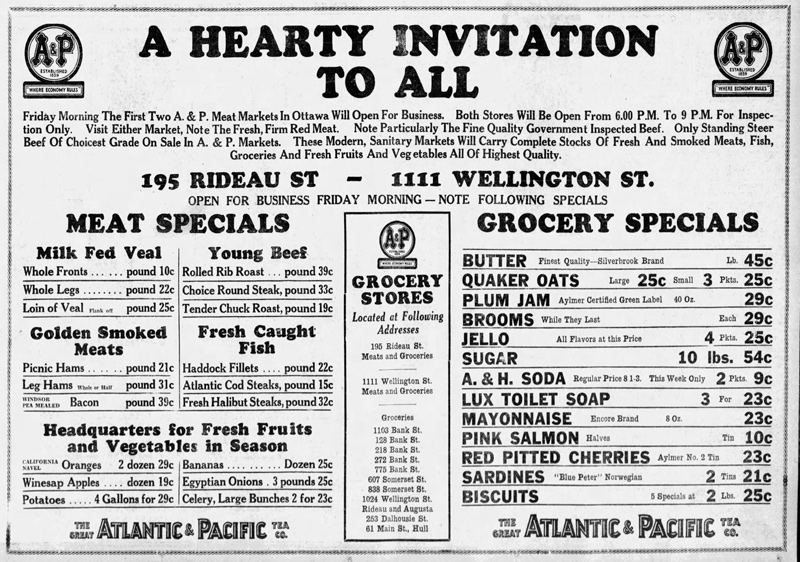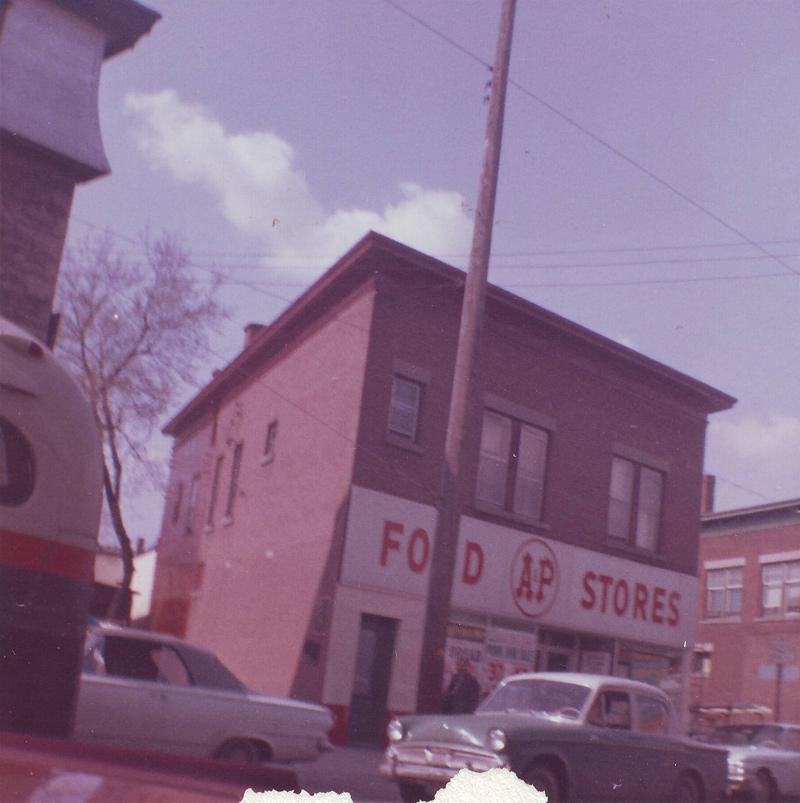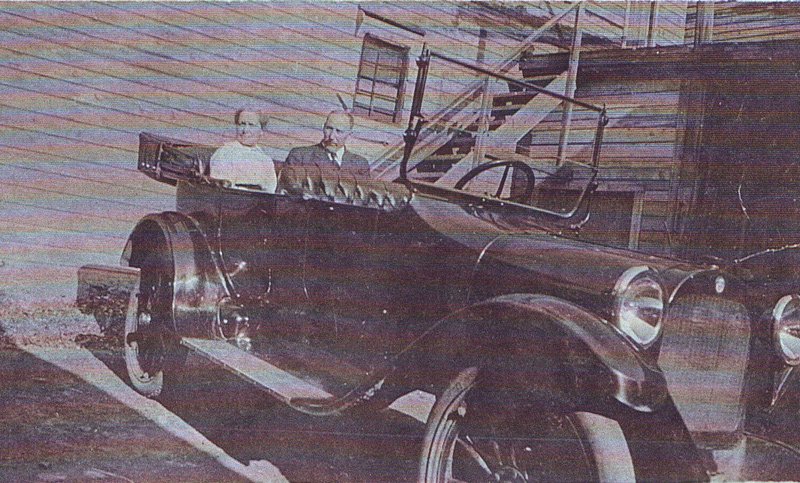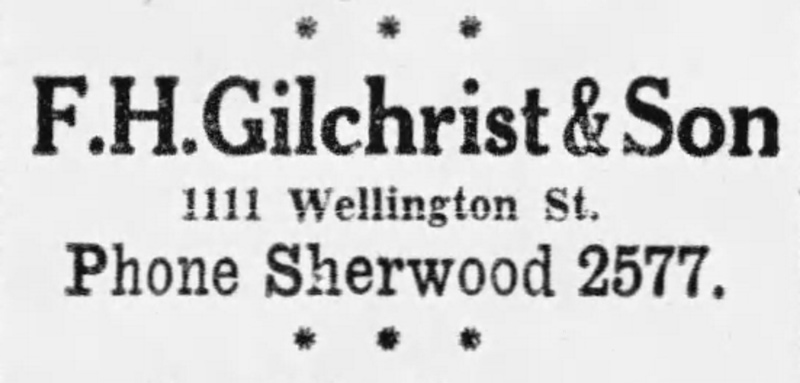By Dave Allston –
In the final quarter of the 19th century, Hintonburg began to take shape as a small village. It owed its existence both to the Richmond Road, which brought farmers and travellers to and from Ottawa, and to the railroad, which created employment and opportunity. However the true heart of early Hintonburg was its merchants, enterprising men and women who took a chance on a small hamlet and invested all they had into growing the little community. One such man was Francis Holmes Gilchrist.
Francis was born in June 1854 just outside Carp, on a 100-acre family farm his parents George and Elizabeth purchased in 1847, not long after arriving in Canada by way of County Tyrone, Ireland. At the age of 18, Francis was gifted his own 10-acre farm (on what is now Huntmar Drive). When he turned 30 in 1884, he gave up farming life, sold the farm to his brother James, and moved to Ottawa where he became a city policeman. He rented accommodations in downtown Ottawa and married his girlfriend (who was actually his cousin), a school teacher named Hannah Jane Brown in December 1886.
In March 1889, Francis acquired a large parcel of land fronting Richmond Road at the northwest corner of Stirling, next to Magee House (which was still occupied by the Magees). He built a square two-storey, six-room brick house, with part of the main floor reserved for commercial space. His father, George, moved in to the new building. Though farming was all he knew his entire life, he had recently lost his wife and had a stroke, so he began a new phase in Hintonburg as an egg dealer. A year later, on July 1, 1890, George was appointed tollgate keeper for the Richmond Road toll, at a rate of $1 per day. The previous tollhouse had burned in a fire in 1888, and it was while George was keeper that the new tollhouse at 1121 Wellington (now the Oresta apothecary) was built in late 1890.
[Click images to enlarge]
George remained tollkeeper until October 1892, though for the final few months he fell ill and his son Francis, taking leave from the police, filled in for him. Francis applied to take over the job officially, but was passed over. He never returned to the police force. Instead, he and his father started a flour and feed shop called Gilchrist & Son. In the 1890s, most families in Hintonburg kept cows, hens or pigs (or all three), and the shop catered to these residents. By the turn of the century, with the arrival of the streetcar, Hintonburg was changing from a rural hamlet to a thriving village. Gilchrist & Son changed with the times and shifted their focus from animal feed to groceries.
George retired from the business in mid-1894, perhaps due to ill health, and moved in with his daughter Jane and her family on Pinhey Street. He passed away in 1904.
Francis ran the store and his wife Hannah handled the accounting. They lived in the apartment above the shop and raised three sons: Thomas Ernest, George Hagar and James Wilmott.
Over time, Francis added to the property and built coops and stables to house the horses, wagons, sleighs, carriages, and chickens they raised to sell both meat and eggs.
A family biography noted: “In the operation of the store, horses were kept for the delivery to customers. F.H. kept extremely good horses for this. He needed good horses as much for visiting their families (in Carp) at Christmas, New Year’s and Easter as for delivery purposes. When their own children were young they would visit their parents in the country on holidays. The night before they would load the kitchen oven with bricks. The following day they would rise early, hitch at team to the cutter, have a team running free behind, set out well before daybreak with the heated bricks lining the floorboards, bundled up in buffalo robes and blankets to keep warm, and proceed at a trot west on Wellington Street. At the midway point in their trip, they would stop and exchange the horses running free for those hitched and then continue on at a trot. Late at night they would return by repeating the process in the opposite direction.”
In 1890, Francis built 126 Stirling Ave. (which was behind the shop), and a year later he acquired the next lot to the north and built 124 Stirling. Both houses still stand today.
Francis was extensively involved in Hintonburg’s local affairs. He was elected as one of the inaugural village councillors in 1894. This accomplishment netted him the honour of actually having two streets named for him: what is now Armstrong Street in Hintonburg (the name changed in 1901), and Gilchrist Avenue in Wellington Village. He helped bring streetcars to Hintonburg, and also argued against their running on Sundays. He campaigned for water and sewer services, and was also involved in the temperance movement.
He was heavily involved with the Rosemount Methodist Church and played a key role when it transitioned to Parkdale United. He contributed significantly to the building fund and was an elder of the church as “one of its most highly regarded members.”
When Wellington Street West was widened, both in 1896 and then again in 1911, Francis was forced to cut off portions of the front of his building at 1111 Wellington St. W. In 1896, he found himself in a pointed battle against the Reeve of Hintonburg. (A Reeve is an elected chief executive in counties and some district municipalities.) The Reeve, using aggressive tactics, sent a gang of workers to physically remove a portion of the house. In response, Francis defended his property with threats of violence. What followed was a year of legal battles. In 1911, when another 11 feet were expropriated, he used the proceeds to renovate.
His grocery store was always considered the largest and most modern in Hintonburg and Francis himself was considered one of the most kind and generous men in the village.
Francis reputedly was Hintonburg’s first automobile owner, proudly operating a 1915 Dodge Touring Sedan, which sported fender damage early on. “Apparently grandpa didn’t convert from horse to car readily,” wrote a grandchild on the back of an old family photo.
All three sons fought overseas during WWI and all returned home. The grocery store business was so successful that the two oldest sons attended McGill University and graduated as engineers, while the youngest, Wilmott, took over the business in 1922. At this point the store was renamed Francis H. Gilchrist & Son.
Francis wisely invested in real estate and built several properties in Kitchissippi: a cottage in Westboro, a house on Sherbrooke Avenue, a semi at 41-43 Fairmont Ave., and a home at 39 Fairmont Ave. where he lived until his death in September 1932.
By the late 1920s, the grocery business was changing. Chains formed, which helped them take advantage of large-scale purchase pricing. Independents could not compete, so in 1928 Wilmott rented the shop to A&P (The Great Atlantic & Pacific Tea Company) and managed it for them. It remained an A&P until 1973, and in 1974 the building was sold by the Gilchrist family after 75 years. It is now National Access Cannabis, but over the past 44 years it has also been The Fishing Hole, Four Aces Billiards, B&B Appliances, and Heavens to Betsy, among others.
Today, Gilchrist Avenue and the 129-year-old building at 1111 Wellington St. W. still stand as a lasting symbol of the legacy of community builders like Francis Gilchrist, from Hintonburg’s early days.
Dave Allston is a local history buff and author of The Kitchissippi Museum. His family has lived in Kitchissippi for six generations. Do you have stories to share about the area? Send your email to stories@kitchissippi.com. To read more of Dave’s columns, click here.
